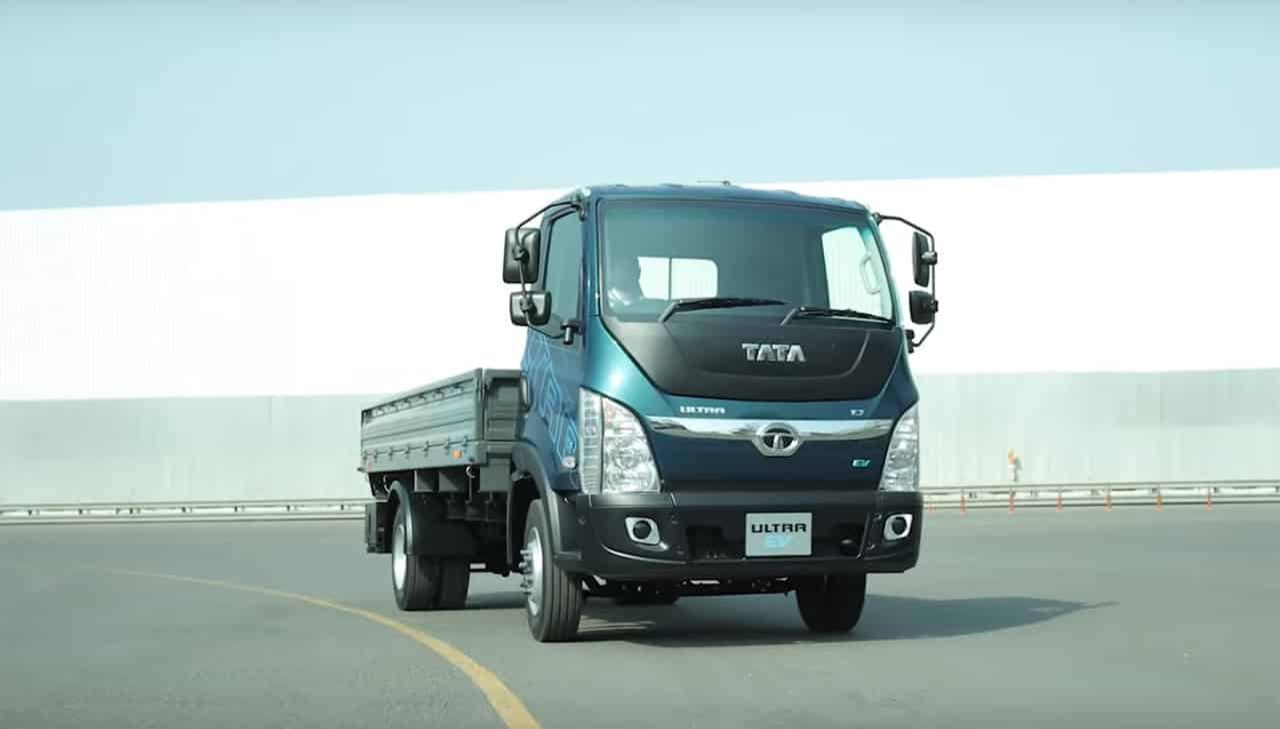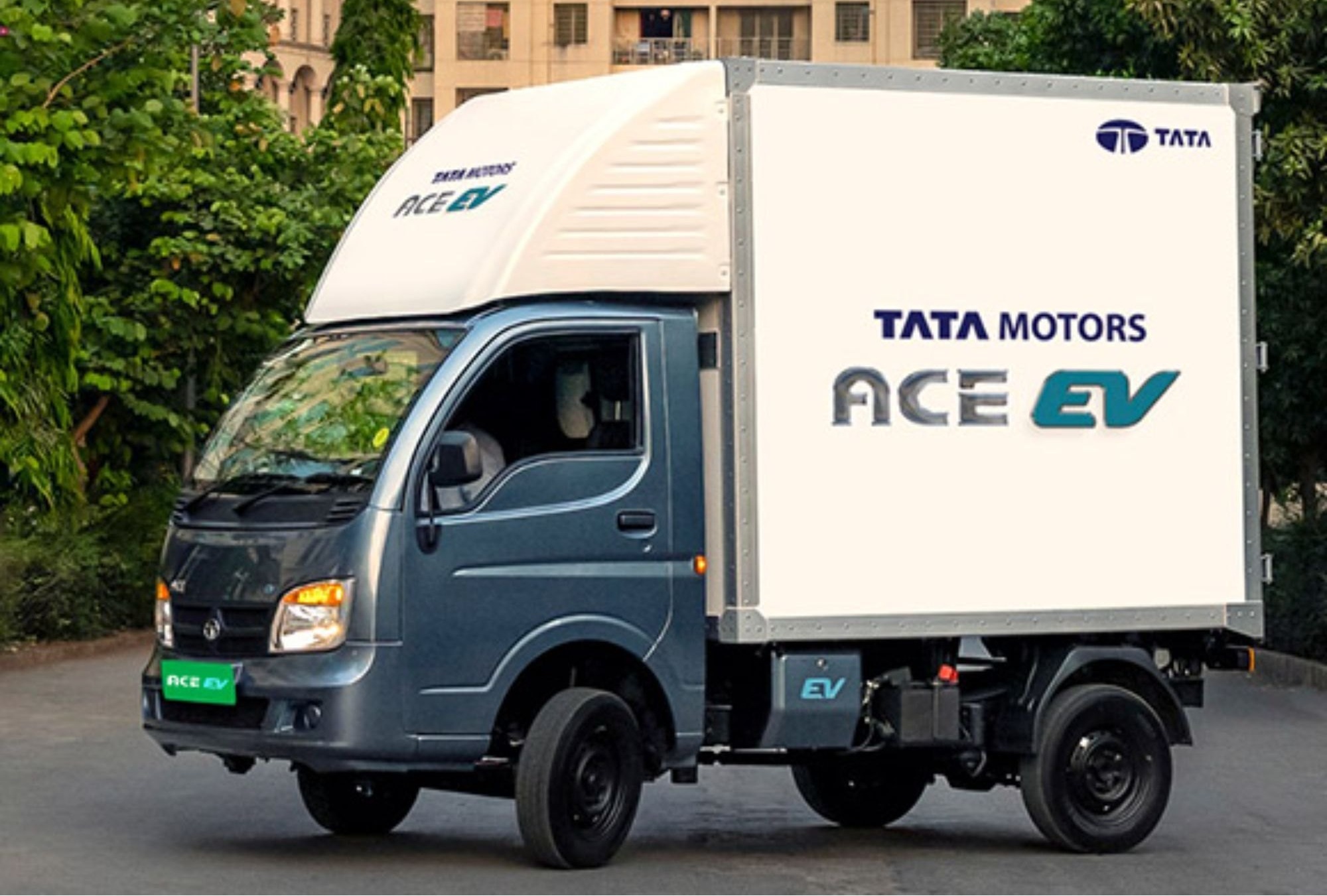Here’s a more reader-friendly, long-form blog article tailored for your website on financing the Tata Ace EV — with tables, links, and clear explanations. You can adapt it into your theme layout (H1–H3 headings, internal links, FAQs etc).
If you’re looking to buy the Tata Ace EV for your business — whether as an owner-operator or a fleet vehicle — getting the right finance deal is absolutely key. A good loan can make the difference between comfortable monthly payments and cash-flow stress. In this guide we’ll break down what you need to know, what lenders typically offer, how to compare them, and step-by-step how to apply.
Why financing matters for the Tata Ace EV
Buying any vehicle is an investment — with the Tata Ace EV, you’re buying more than a truck: you’re buying into lower running costs (fuel-electricity), fewer maintenance hassles, and the advantage of “green” credentials. But you still need to pay for it up-front (or via loan). Here’s why the loan is important:
- It helps you preserve cash: Instead of paying a large lump sum, you can spread cost via EMI and keep capital for other business uses.
- It improves cash-flow management: Monthly predictable payments mean you can plan budgeting, especially since EVs have lower operating cost.
- It allows you to leverage subsidies: Many EV models get central or state subsidies; a loan structure that accounts for this can reduce your up-front outlay.
- It may give you better financing terms: Some lenders are offering EV-specific loan programmes with slightly better terms.
- It helps you in business accounting: The loan may be treated as an asset financing, with tax/ depreciation implications (check your tax advisor).
In short: you want to pick the right lender, with the right tenor, interest, down payment, and structure.
What lenders typically offer — and what to check
When you approach financing for the Tata Ace EV, here are the key features you’ll want to compare.
Key comparison criteria
| Feature | Why it matters |
|---|---|
| Interest rate (fixed or floating) | Lower rate = lower EMI and total cost over time. EV-loans sometimes have a concession. |
| Loan tenure | Longer tenure = lower EMI but more total interest cost; shorter tenure = higher monthly payment but less interest. |
| Loan-to-Value (LTV) | How much of the on-road price they will finance. Higher LTV = less down payment needed. |
| Processing / upfront charges | Adds to your effective cost. |
| Moratorium / flexible EMI options | For new businesses/fleets, a little breathing space helps. |
| Subsidy treatment | If the vehicle is eligible for subsidy, how is that handled by the lender/dealer matters. |
| OEM / dealer tie-ups | Sometimes the manufacturer’s finance company or NBFC gives better packaged offers (dealer discounts + better tenure). |
Sample lender data
Here are some real-life figures from lenders you can use as benchmarks:
- IDFC FIRST Bank: For “Electric Commercial Vehicle” loans: up to 95% funding of on-road price; tenure up to 60 months. (idfcfirstbank)
- HDFC Bank: For new commercial vehicles: up to 100% funding; up to 5 year repayment tenure. (HDFC Bank)
- The OEM side: Tata Motors Finance / dealer site says: up to 95% of ex-showroom price, long tenure options. (smalltrucks.tatamotors.com)
So you can aim for similar numbers when negotiating.
Sample EMI calculation — what to expect
Let’s run a quick example so you have realistic expectations.
According to one online calculator for the Tata Ace EV:
- Loan amount: ~₹10.51 lakh
- Rate: ~10.5% p.a.
- Tenure: 60 months
- Resulting EMI: ~₹20,331/month.
Another calculator shows: Down payment ₹1.02 lakh, interest 13%, EMI for 60 months ~₹20,887/month.
What this implies
- If you borrow ~₹10 lakh for 60 months @ ~10–13% you’ll pay ~₹20,000-₹21,000 monthly.
- If you stretch tenure (say 72 months) the EMI may reduce but total interest will go up.
- If you increase down payment or get a lower rate, EMI falls.
- Always include processing fees and other charges — calculators often omit them.
Use this as a quick “ball-park” table
| Loan amount | Rate (p.a.) | Tenure | Approx EMI |
|---|---|---|---|
| ₹10 lakh | 10.5% | 60 months | ~₹20,300 |
| ₹10 lakh | 13% | 60 months | ~₹20,900 |
| ₹10 lakh | 10.5% | 72 months | ~₹17,800 approx* |
*Estimated by extending the tenure; you should use lender calculator or bank website to get exact.
Step-by-step: how to apply (your checklist)
Here’s a practical flow you can follow when you (or a client) goes ahead with financing the Tata Ace EV.
- Get the on-road price from your local Tata dealer: ex-showroom price + RTO + insurance + any accessories.
- Check subsidy eligibility: Ensure the model is eligible for any central/state EV subsidy; know how it will be paid (to you/dealer/lender).
- Decide down payment: For example if price is ₹10 lakh, you might put down ₹1–2 lakh or more depending on your cash flow.
- Run EMI scenarios: Use an online calculator (Tata website has one) (Tata Motors Trucks) — try 36, 48, 60, 72 months; try rate 9% for best case, 13% for conservative case.
- Gather quotes from at least 2–3 lenders: For example SBI, HDFC Bank, IDFC FIRST Bank, plus the OEM’s finance arm. Use the comparison criteria above.
- Compare net cost: Looking not just at interest rate, but processing fee, down payment, tenure, and subsidies.
- Submit application: Fill in required documents (KYC, address, income/business proof, vehicle pro-forma invoice) and apply via dealer or branch.
- Loan sanction & vehicle registration: Once loan is approved, dealer will proceed with registration, hypothecation, insurance etc.
- Begin EMI payments: Ensure your first EMI start date is as expected; set up ECS/auto-debit so you don’t miss payments which hurt your credit.
- Maintain good records: Keep all documents, schedule, insurance etc. With EVs there may be additional warranty or battery lease components (depending on the model and scheme).
Bank & lender comparison – simplified table
Here’s a summary table of major lenders you should check. Note: Rates and terms are indicative. Always check with the branch or dealer for latest offers.
| Lender | Max financing | Tenure | Key perk |
|---|---|---|---|
| IDFC FIRST Bank | Up to 95% of on-road price for electric commercial vehicles. (idfcfirstbank) | Up to 60 months | No guarantor option in some cases; electric vehicle focus. |
| HDFC Bank | Up to 100% funding for new commercial vehicles. (HDFC Bank) | Up to ~5 years | Good online process; large branch network. |
| OEM finance (Tata Motors Finance) | Up to ~95% of ex-showroom price in some cases. (smalltrucks.tatamotors.com) | Flexible (3-5 years typical) | OEM tie-up means dealer may push it; convenient. |
When you meet the banker ask for: the exact rate for your profile, whether it’s fixed or floating, how subsidy is handled, what down payment they expect, what the prepayment/foreclosure charges are.
Tips to get the best deal
- Mention that it is an electric commercial vehicle (EV) and ask for any green-vehicle concession.
- Ask the dealer if there are any campaign deals via OEM finance (for example promotional low EMI or lesser processing fee).
- If you have good business credit, or you are buying fleet size (say 5+ vehicles), you may negotiate better terms.
- Try to increase down payment slightly if you can — this tends to lower EMI and reduce interest burden.
- Use shorter tenure if your cash-flow allows — less interest overall.
- Always check when the EMI starts (some schemes delay first payment by 1–2 months) — factor that in.
- Understand battery/ownership aspects if applicable (some EV financing or leasing may have battery-lease separate) — request full disclosure.
- Keep your business documentation ready (bank statements, GST, profit-loss if any) — commercial vehicle finance is more stringent than personal.
FAQs
Q: Can I get 100% funding (i.e., no down payment) for Tata Ace EV?
A: Some lenders and OEM finances offer very high funding (90%+), but getting full 100% without any down payment is rare in practice — you’ll usually have to contribute something (RTO, insurance, accessories) or meet special schemes. Always confirm with the specific lender.
Q: Are interest rates for EVs lower than for diesel/petrol vehicles?
A: In many cases yes — lenders are starting to treat EVs as “green vehicles” and may offer small concessions. For example, in May 2025 one study showed EV car loans as low as ~8.15% vs ~8.30% for non-EVs. (The Economic Times) But for commercial EVs the difference depends on credit profile, tenure, and risk perceived by lender.
Q: Does registering the vehicle as commercial make financing harder/cheaper?
A: Financing commercial vehicles tends to be slightly different (and sometimes a bit more strict) because the vehicle will be used for business and may have higher usage/risk. However the benefits (tax depreciation, ability to offset business expense) can outweigh that. Make sure you disclose correctly.
Q: What happens if I default on EMI?
A: The vehicle is hypothecated (i.e., lien is with the lender). Non-payment can lead to repossession, negative credit history, and legal consequences. So be sure your business cash-flow can support the EMI comfortably.
Conclusion
Financing the Tata Ace EV can be a smart move — especially if you choose the right lender, right tenure, and negotiate well. Because your regular costs (fuel, maintenance) will be low with an EV, your monthly burden (EMI) becomes one of the main variables to manage. Use this guide to compare offers, do your homework, and secure a loan that supports your business goals.







